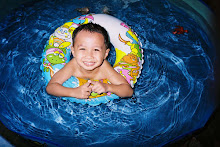De 20 lagene er klare.
Pressemelding:20 TEAMS CONFIRMED FOR LTDL 2010
Apart from Kelly Benefit Strategies, which is registered in Minneapolis, the Colombian national team and Thailand have been roped in to replace ProTour teams Astana and Caisse d'Epargne who could not make the race, although they were on the initial list of the organisers.
The line-up for LTdL 2010 is led by one ProTour team, Footon-Servetto from Spain, two Professional Continental teams - ISD-Neri (Italy) and Vorarlberg-Corratec (Austria).
The remaining teams are made up of 12 Continental teams - Drapac-Porsche (Australia), Tabriz Petrochemical (Iran), Seoul Cycling Team (South Korea), Marco Polo Cycling Team (China), Aisan Racing Team (Japan), Max Success Sport (China), Le Tua Cycling Team (Malaysia), Team Geumsan Ginseng Asia (South Korea), Team Jayco-Skins (Australia), Azad University (Iran), Giant Asia Racing Team (Taiwan) and Kelly Benefit Strategies (USA).
Five national teams complete the line-up. They are South Africa, Kazakhstan, Colombia, Thailand and Malaysia.
The Colombian national team features the interesting return to LTdL of 2002 overall winner Hernan Dario Munoz, winner of the Genting Highlands stage for two consecutive years in 2002 and 2003 when he was riding for the Colombia-Selle Italia team under charismatic director Gianni Savio.
The Thai national team makes its first appearance in the Tour began in 1996, taking it's turn from the Indonesian and Philippines national teams who had been invited prior to this.
Apart from Kelly Benefit Services, three other Continental teams will be making their debuts in this year's race - Aisan Racing Team, Max Success Sports and Geumsan Ginseng, who will feature Malaysian sprinter Anuar Manan.
1 FOOTON-SEVETTO PROTOUR (SPAIN)
The 15th edition of the UCI (Hors Category) stage race will take place from Kota Bharu - Kuala Berang (174.5km); Kuala Terengganu - Chukai (182.3km); Pekan - Mersing (145.6km); Mersin-Parit Sulong (163.5km); Muar - Port Dickson (111.5km) Putrajaya - Genting Highlands (102.8km) and Kuala Kubu Baru - Dataran Merdeka (133.7km), covering a total distance of 1013.9km. A total of 120 riders from 20 teams including two local teams are expected to take part in the event, Le Tour de Langkawi 2010.
























































0 comments:
Post a Comment